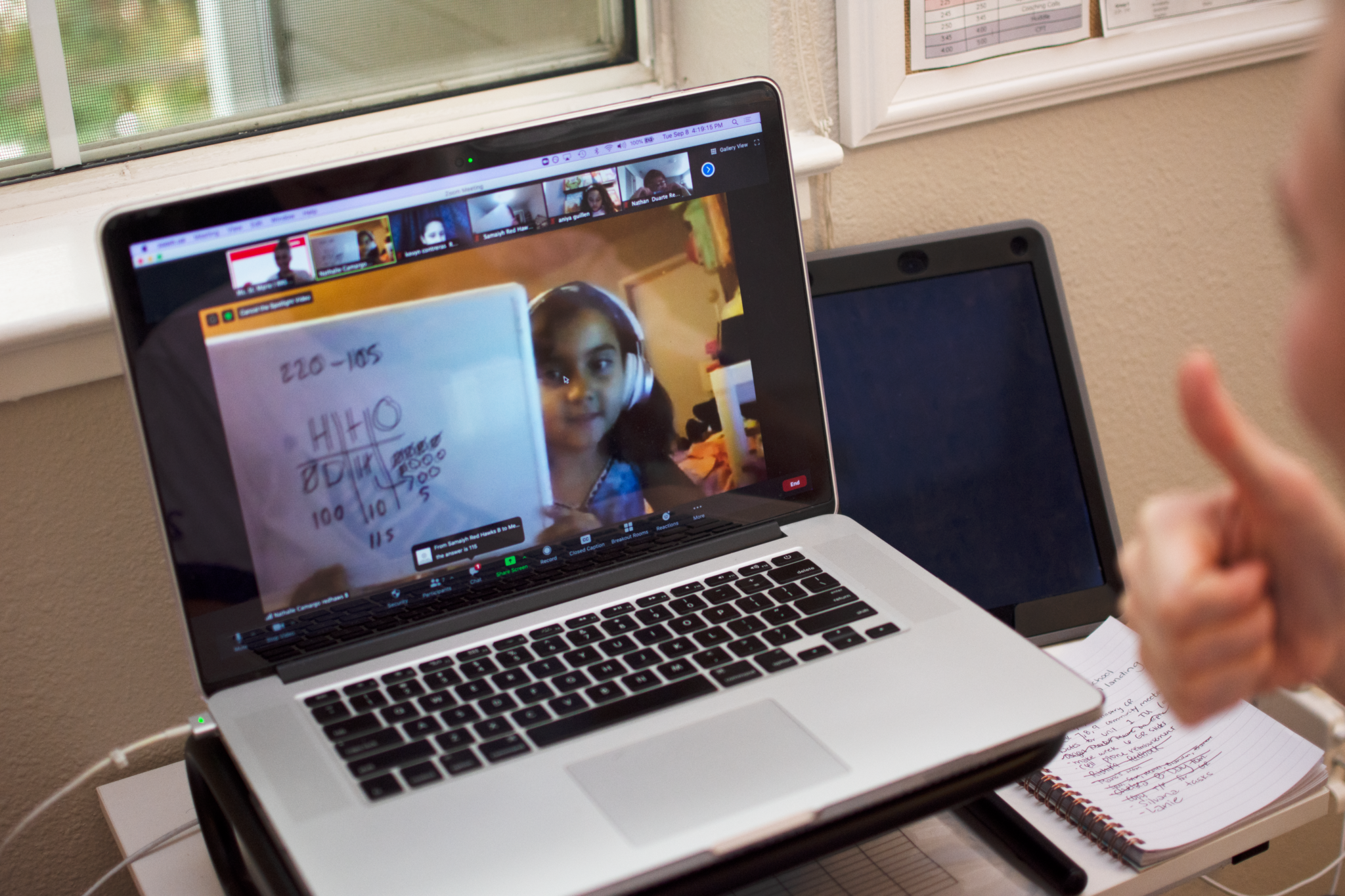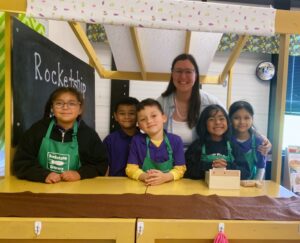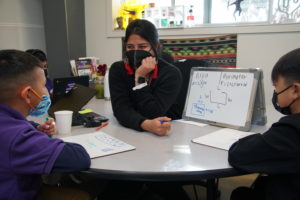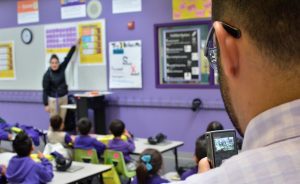
How to Boost Engagement in Virtual Classrooms with Zoom Chat & Breakout Rooms
James Cross, 4th Grade Teacher, Rocketship Nashville Northeast Elementary
Picture this- you show up to your first virtual class of the day, let all your students in from the waiting room, anxiously start your lesson, and are ready to blow student learning out of the virtual park. You spent hours researching and crafting every intricate detail of that lesson. You sweated all the small stuff and just knew it would be a 5 on the evaluation rubric. But as soon as you pose your first check for understanding, you are greeted with a sea of blank cameras and mute buttons on lock. You know that in-person your kids would eat this lesson up, but virtually something just isn’t connecting. What do you do?
The best advice that I can give you is that great teaching will always be great teaching. The techniques and strategies that you hold dear in the classroom can be adapted to work in a virtual setting. We utilize two staple engagement strategies to help spark student investment in learning. You can never go wrong with everybody talks and everybody writes.
Everybody Talks:
As teachers, we exhaust a lot of energy in trying to monitor student talking. The truth is that kids love to talk. But they also have a way of communicating that helps their classmates better understand the topic at hand. Your students are always going to be their peer’s best teacher. So, let’s get them talking!
The ‘Everybody Talks’ approach gives our students an opportunity to share their thoughts with each other. In a traditional classroom, we might call this a turn and talk. The teacher presents some information and then the students have a moment to turn and talk to a neighbor about their learning. And this can 100% happen in a virtual space! After all, this is what breakout rooms were created for.
1. When it’s time to release students to a turn and talk, put them in a breakout room with 1-2 other students. I know, this sounds scary. There will, inevitably, be way more breakout rooms than teachers, but I promise it’ll be great.
2. Make sure students are clear on what they should be discussing. Have them join their space, and let them talk! This gives you, the teacher, ample time to pop in on a few spaces to check-in on their conversation.
3. If students aren’t talking- get them started. Remind them of the prompt and wait for the discussion to start. If students are talking- let them talk! Become a listener and leave them with something to push their conversation.
4. When time is up, bring all the students back and cold call on a few groups to share. I’d suggest at least one group you listened in on that can drive the whole group discussion. Then, call on one group you didn’t get to see to ensure they had a fruitful conversation. You’d be surprised at how many students are eager to build on or share their opinion now.
Remember, speaking out loud in front of the larger class is outside of some of our kids’ level of comfort. Holding our students to high-expectations calls for no opt-out, but when we have the opportunity to make our task work for all kids, we always should.
Integrate opportunities for Everybody Talks when creating your daily lesson, but also keep it in your toolkit in case you see a dip in engagement.
Everybody Writes:
Teaching our kids to write is tough. Teaching isn’t easy, but teaching writing can be a whole different ballpark of hard. Add in the struggles of virtual teaching and writing might be the first thing off your priority list. But I’m here with some good news – the chat feature was invented for teachers to get their students writing!
‘Everybody Writes’ is one of those strategies that should be used in every class. We strive to help our kids reach a point where they are participating in a rich conversation about every topic, every day. This is the dream! And in order to make this come to life, we have to set our students up for success.
1. Before we call on students to respond to a question or prompt, we need to give them an opportunity to write. All kids take a moment to collect their thoughts and write them down. This strategy ensures that all kids have an opportunity to equally prepare to participate in the discussion. All you have to do is pose the question and put the chat box to use.
2. Students write their thoughts in the chat as a space to share them with the class and their teacher. The teacher can then read the responses and select who they would like to share and start the discussion. You can also have them send a direct message to you, the teacher, instead if you want to wait on the whole class seeing their response. Students could also write their thoughts on paper at home, but the chat allows you to monitor their writing in the moment. The method is up to you, but the goal is to get our students writing and processing what they are learning.
4. Stick to your teacher wait time and give ALL kids an opportunity to prepare for the discussion. Our students all hold unique strengths and areas to grow. This means that some kids will inevitably write their thoughts faster.
‘Everybody Talks’ and ‘Everybody Writes’ are essential engagement strategies when in-person teaching. With a little planning, and commitment to making it work virtually, they can become the go to in your virtual class, as well!
Published on November 3, 2020
Read more stories about: Tips for Engagement, Uncategorized.
Back In The Classroom
First Year Teacher? Here are Five Mistakes to Avoid.
Jeremiah David, Paraprofessional, Rocketship Dream Community Prep | November 1, 2024
See what mistakes most first year teachers make and how you can get ahead this school year with some simple tips from a fellow educator.
Read more ⟩3 Classroom Systems New Teachers Swear By
Rocketship Public Schools | Sept. 30, 2024
As a first year teacher, establishing a smooth and productive classroom environment can feel a tad overwhelming. Thankfully, these simple strategies can go a long way.
Read more ⟩How Co-Teacher Collaboration Can Benefit Your Classroom
Featuring Alejandra Chavez, Education Specialist at Rocketship Mosaic Elementary | June 10, 2024
Hear from Ms. Aly about how a small team of educators can make a big difference in student outcomes through thoughtful planning, focused collaboration, and personalized accommodations. Ms. Aly was one of our highest-performing educators in California for the 23-24 school year.
Read more ⟩How to Spark Joy in ESL Classrooms with a Multilingual Learning Clubhouse
Featuring Ms. Amy De La Rosa, Multilingual Specialist, Nashville Northeast Elementary | June 1, 2023
Listen in to an audio interview with Amy De La Rosa, a Multilingual Specialist who has worked as an educator for over 14 years and found an innovative way to help her students learn English in a more accelerated, playful way.
Read more ⟩Supporting Parents of Multilingual Students in Family/Teacher Conferences
Emma Volpe, Rocketship United Academy | June 1, 2022
Get thoughtful insight on how to create a more inclusive family-teacher conference environment.
Read more ⟩5 Ways to Strengthen Relationships in the Classroom
James Cross, Assistant Principal, Rocketship Nashville Northeast Elementary | February 20, 2022
A new age of education calls for a new level of connection. Here are some key tips to strengthen relationships in your classroom this school year.
Read more ⟩5 Ways School Leaders Can Coach and Support Teachers
Eesir Kaur, Director of Professional Development | October 15, 2020
Are you a school leader looking to coach your teachers more effectively? Here's what works for us.
Read more ⟩










